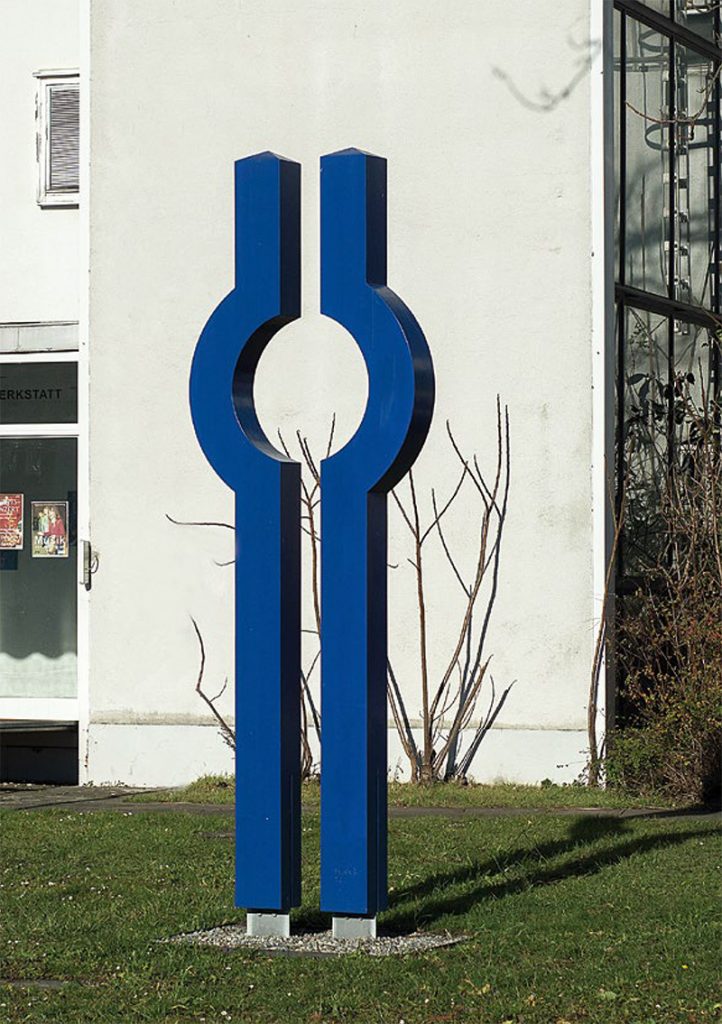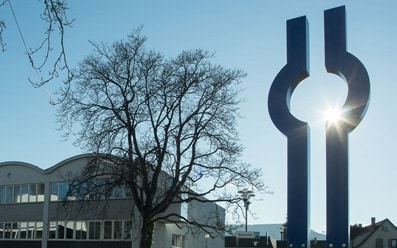PAUSA SCULPTURE
2015
WOOD, BLUE PAINTED
350 x 110 x 24 cm
With the Pausa sculpture, Andreas Felger realised a sculpture in 2015 in the middle of the listed area of the Pausa textile factory in Mössingen, for which he worked as a young man. Two 3.5 m high, blue wooden steles suggest a circular shape with their opening in the upper half. Formal conciseness is achieved with the simplest of means; the sculptural form incorporates its immaterial counterpart, the empty form between the steles. The sculpture remains open. It leaves room for ideas that are directed upwards. Skywards.
The year in which the Pausa sculpture was unveiled at Löwensteinplatz in Mössingen was a special year for Andreas Felger. In 2015, the artist turned 80 and was honoured with a series of events. The highlight was the exhibition WERK.STOFF. The Textile in Art in the then newly opened barrel hall of the old Pausa. Felger donated a sculpture to the city that closed the circle from the beginnings of the textile factory and his own beginnings as a textile designer in the 1950s to the present and at the same time kept it open.
When it was inaugurated, the artist gave a speech to comment on his work: He made (as is his way) few words, but these straightforward, clear and aware of the authority of art, artist and work. But always with a twinkle in his eye, a humorous verve that speaks to the listener and viewer: I am strict, but not rigid; I demand something, but I also give leeway; I show completion, but the form only completes itself in the imagination of the sighted.
So it is easy to see the connections between the artist and his sculpture, the relationship between the Pausa-P and the double-P of the work, which formally appears like a key, as well as the position of a work of art that mediates between man and building. It is a landmark that demonstrates in itself how a (textile) design can become a sculpture, and thus becomes a symbol of a place that was a production site for textiles and has become a place of the arts.
Text by Marvin Altner



